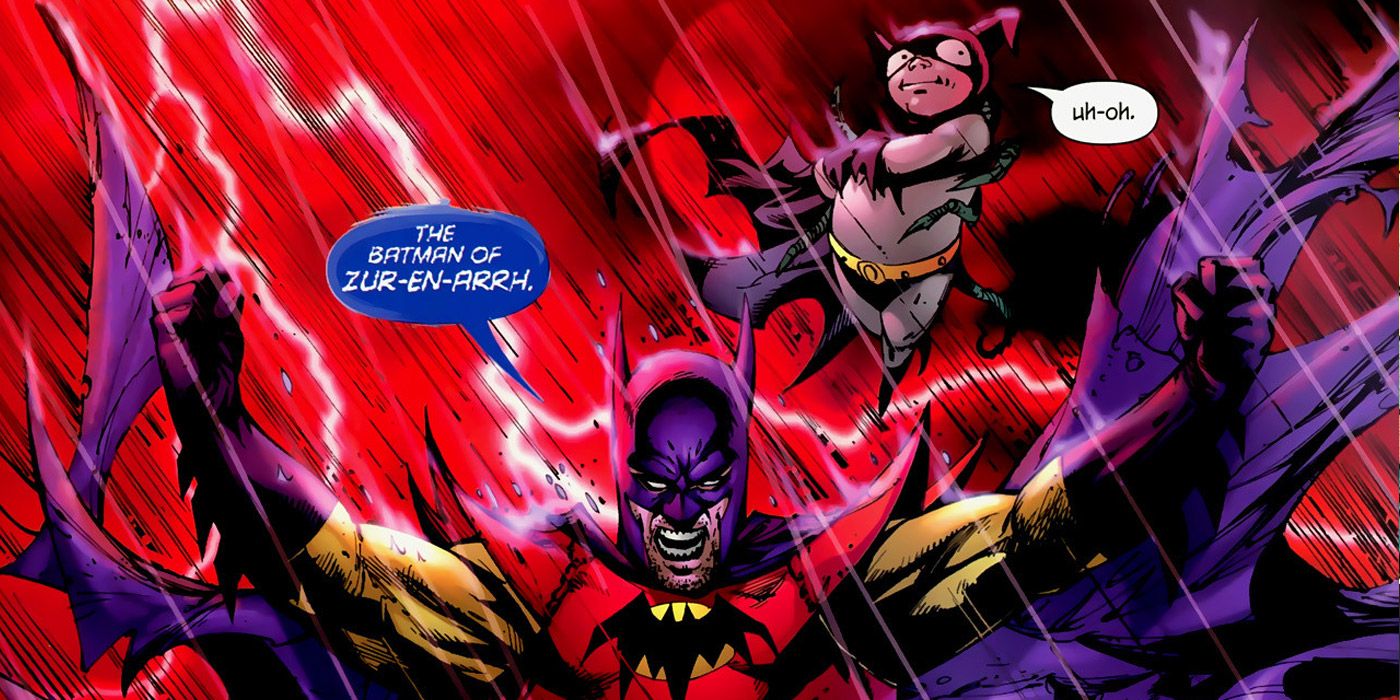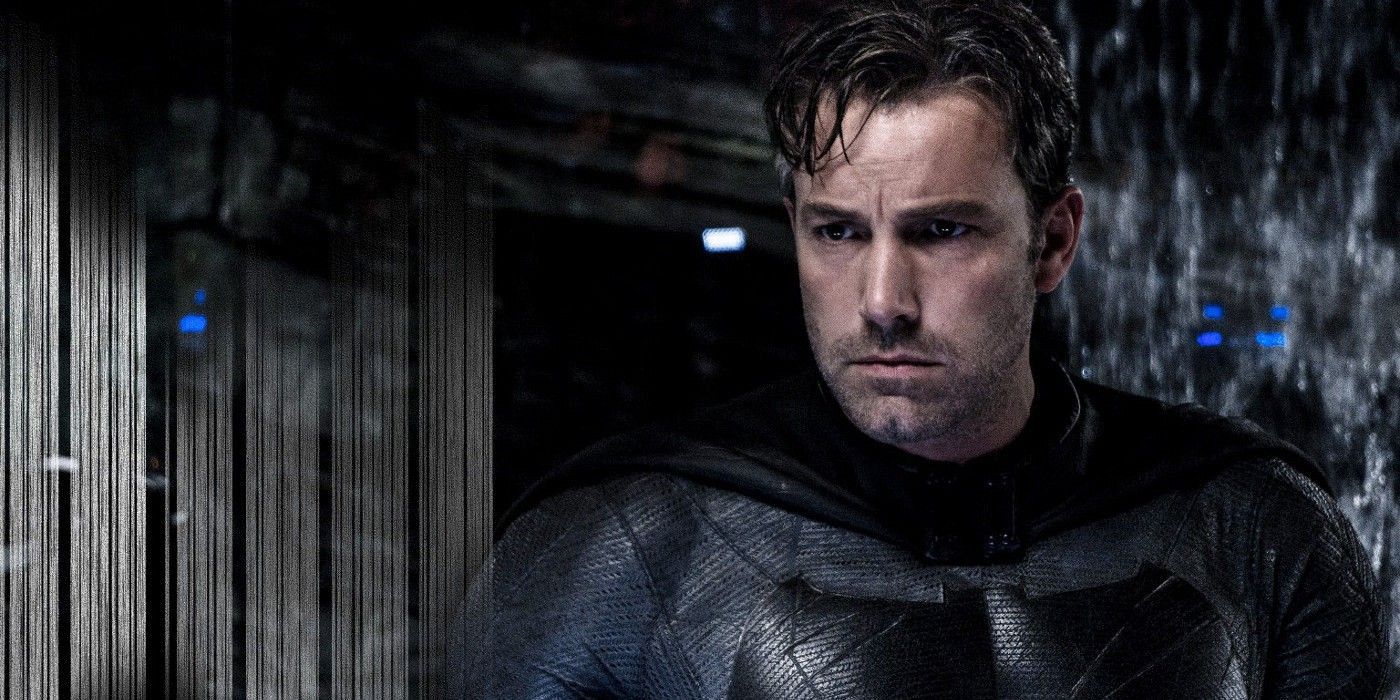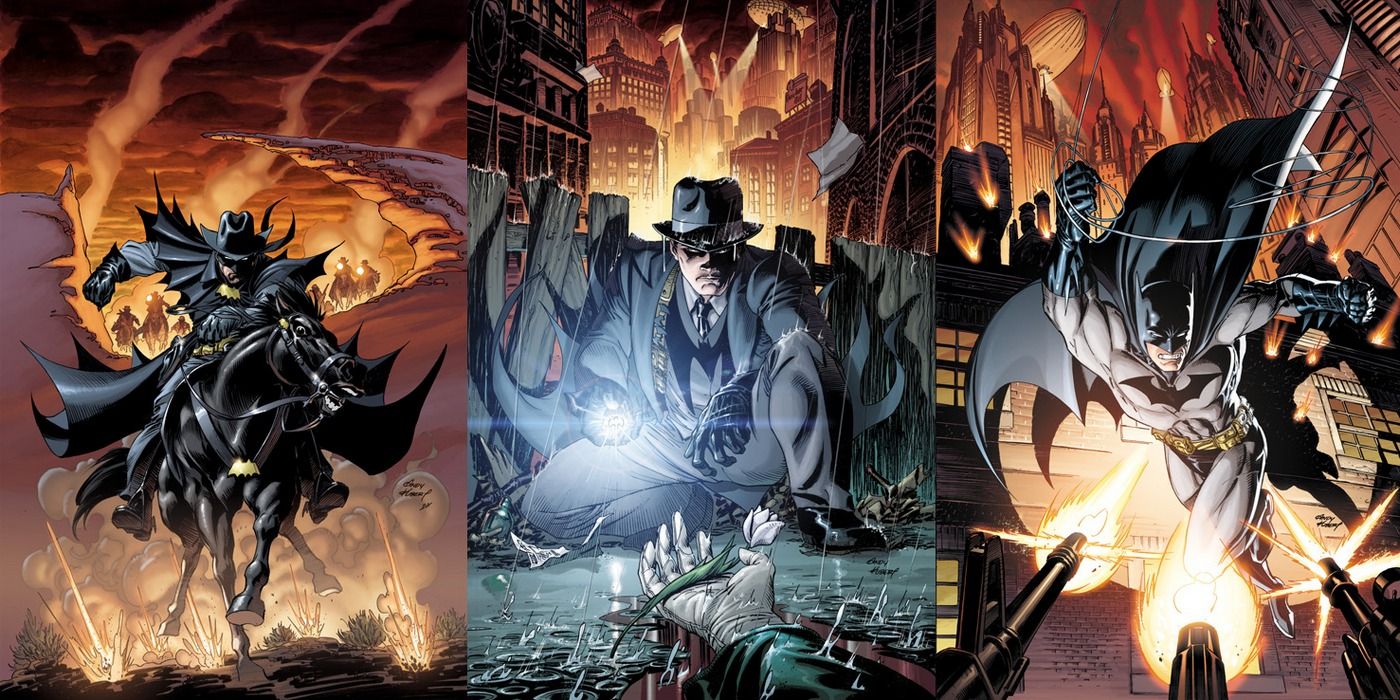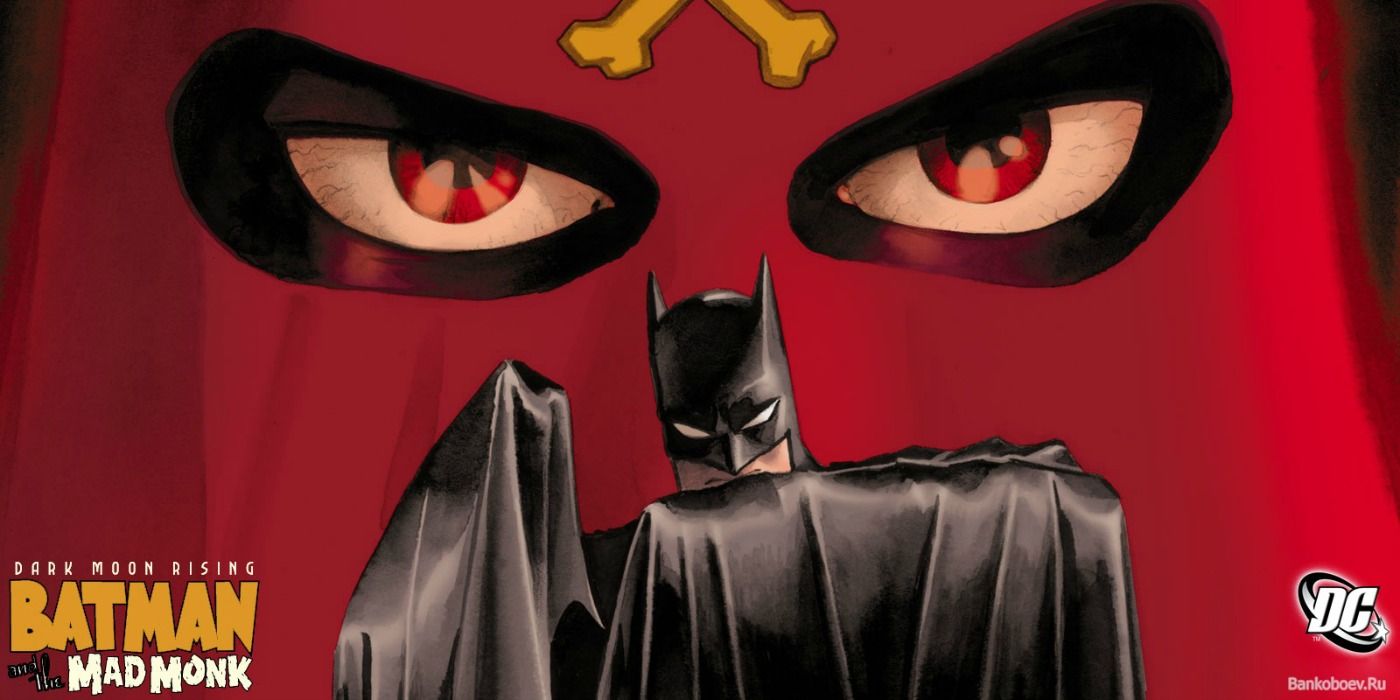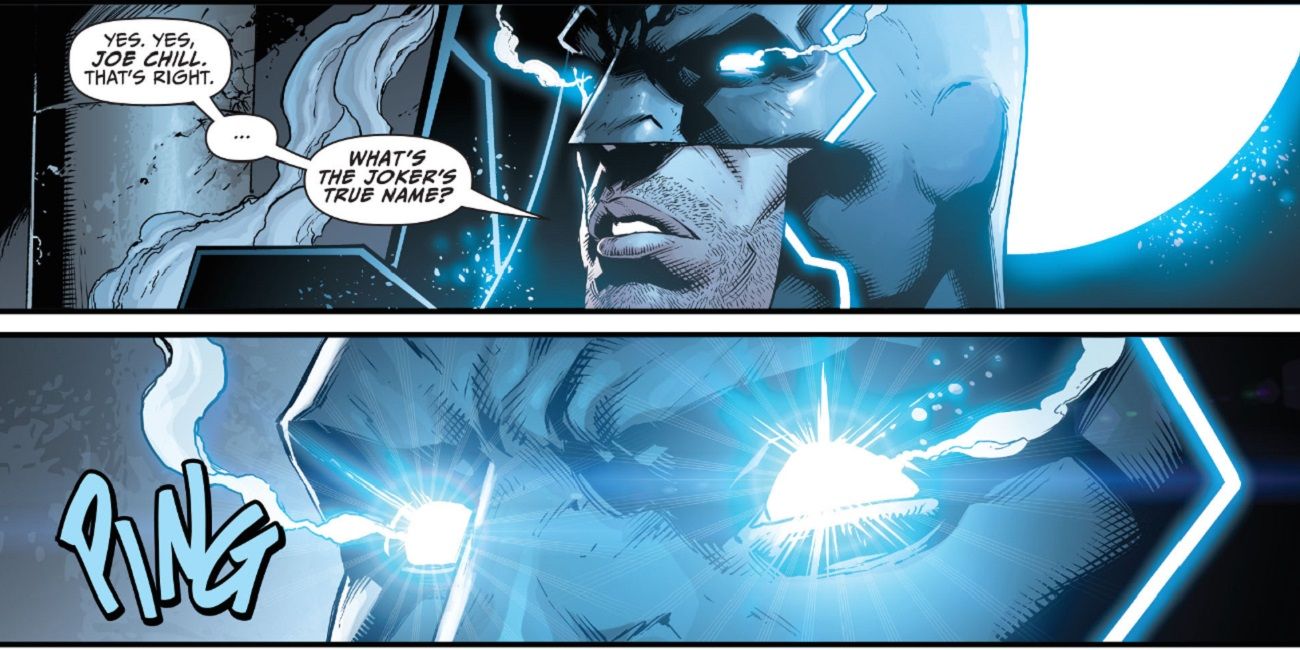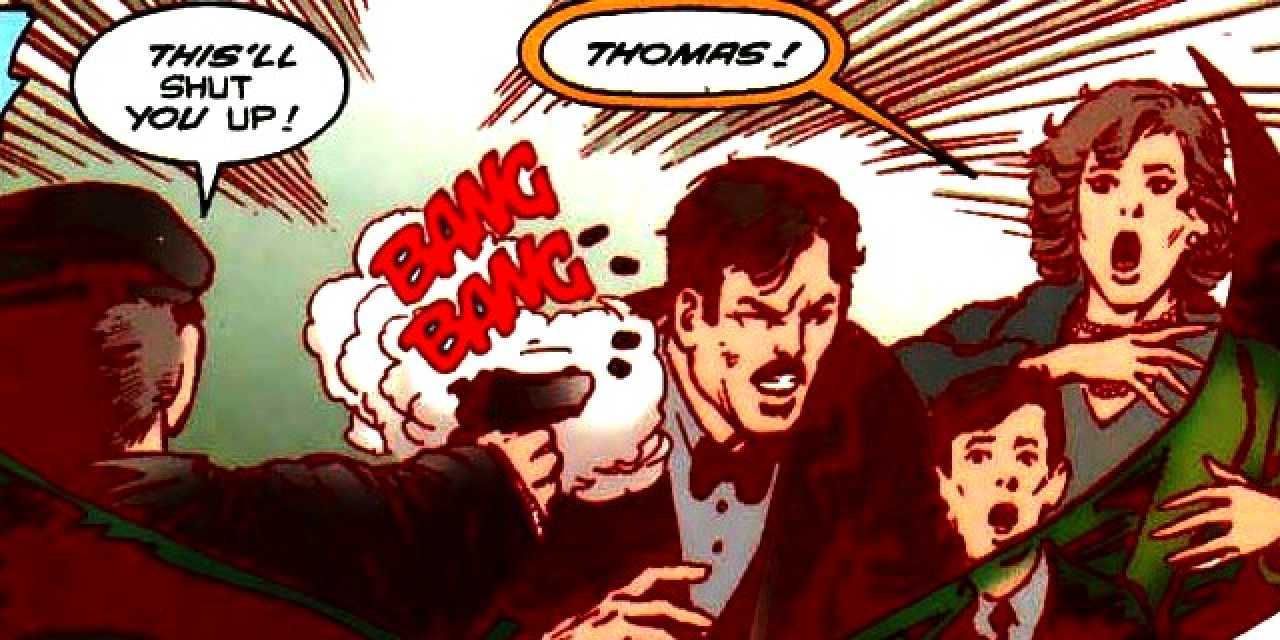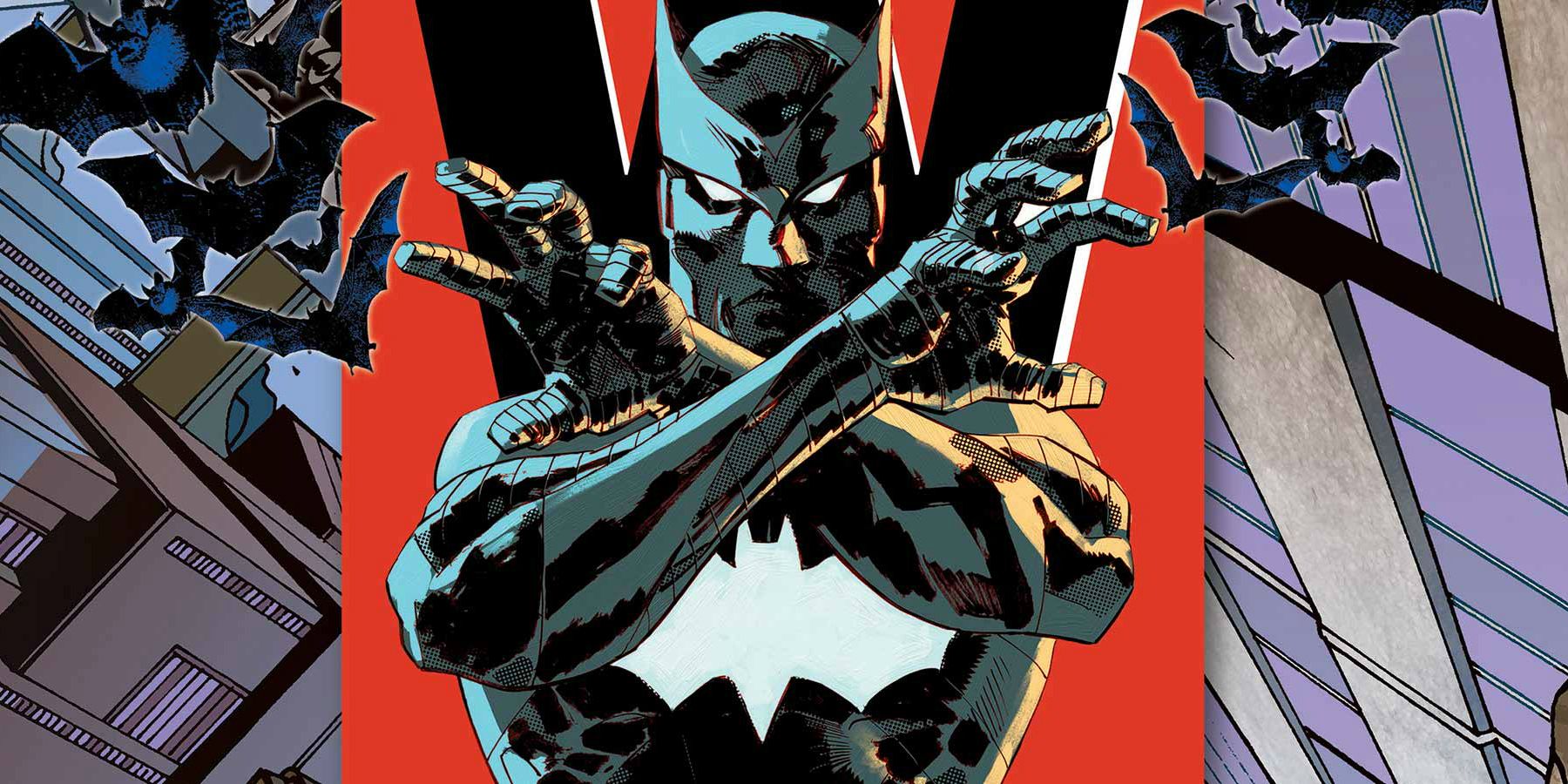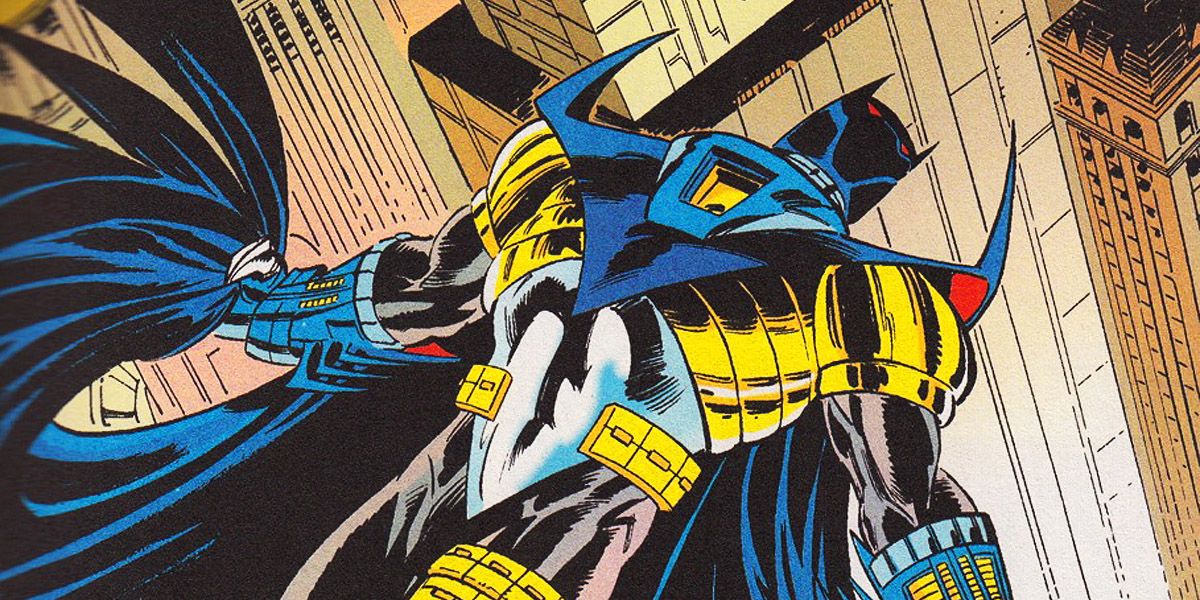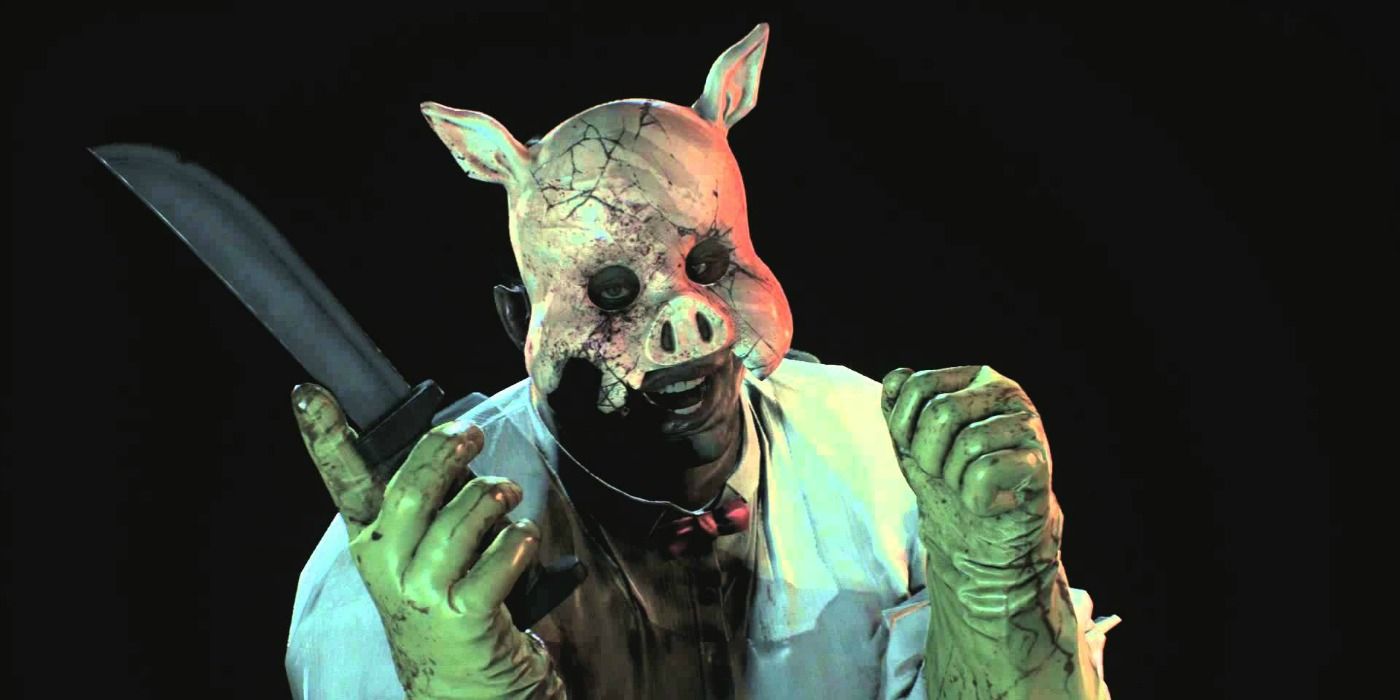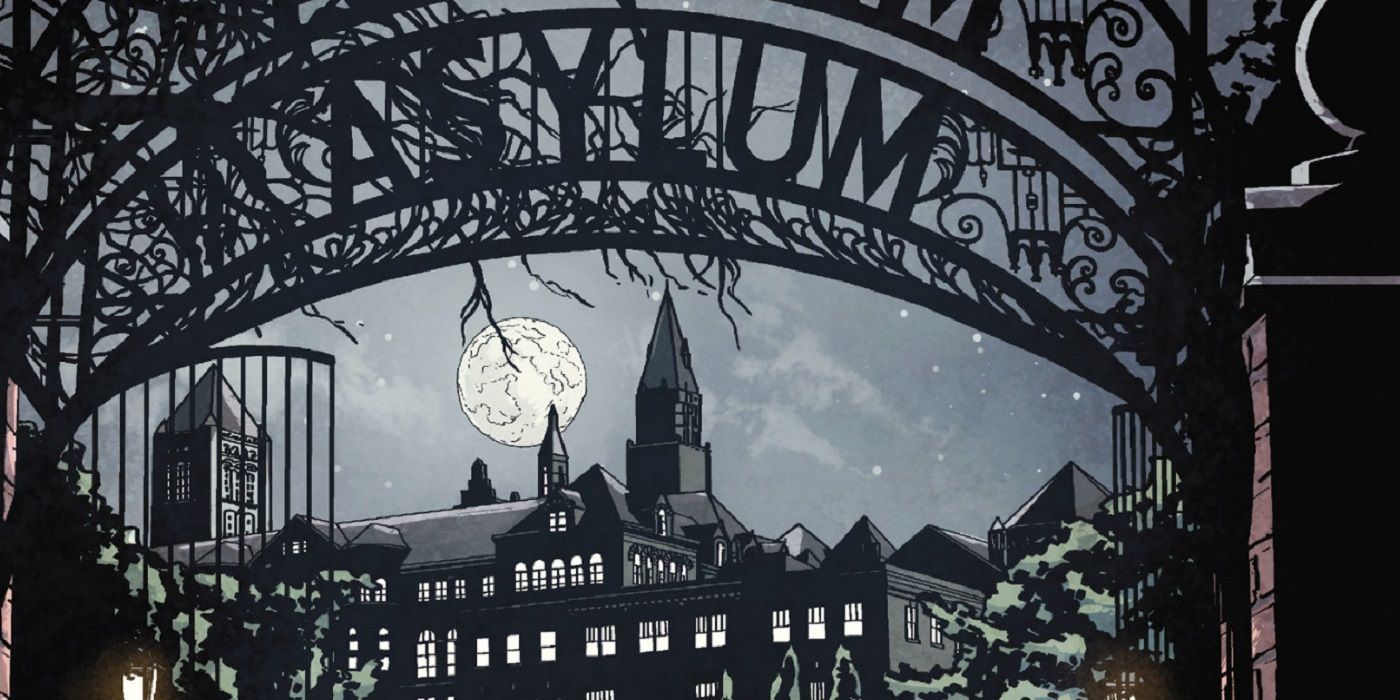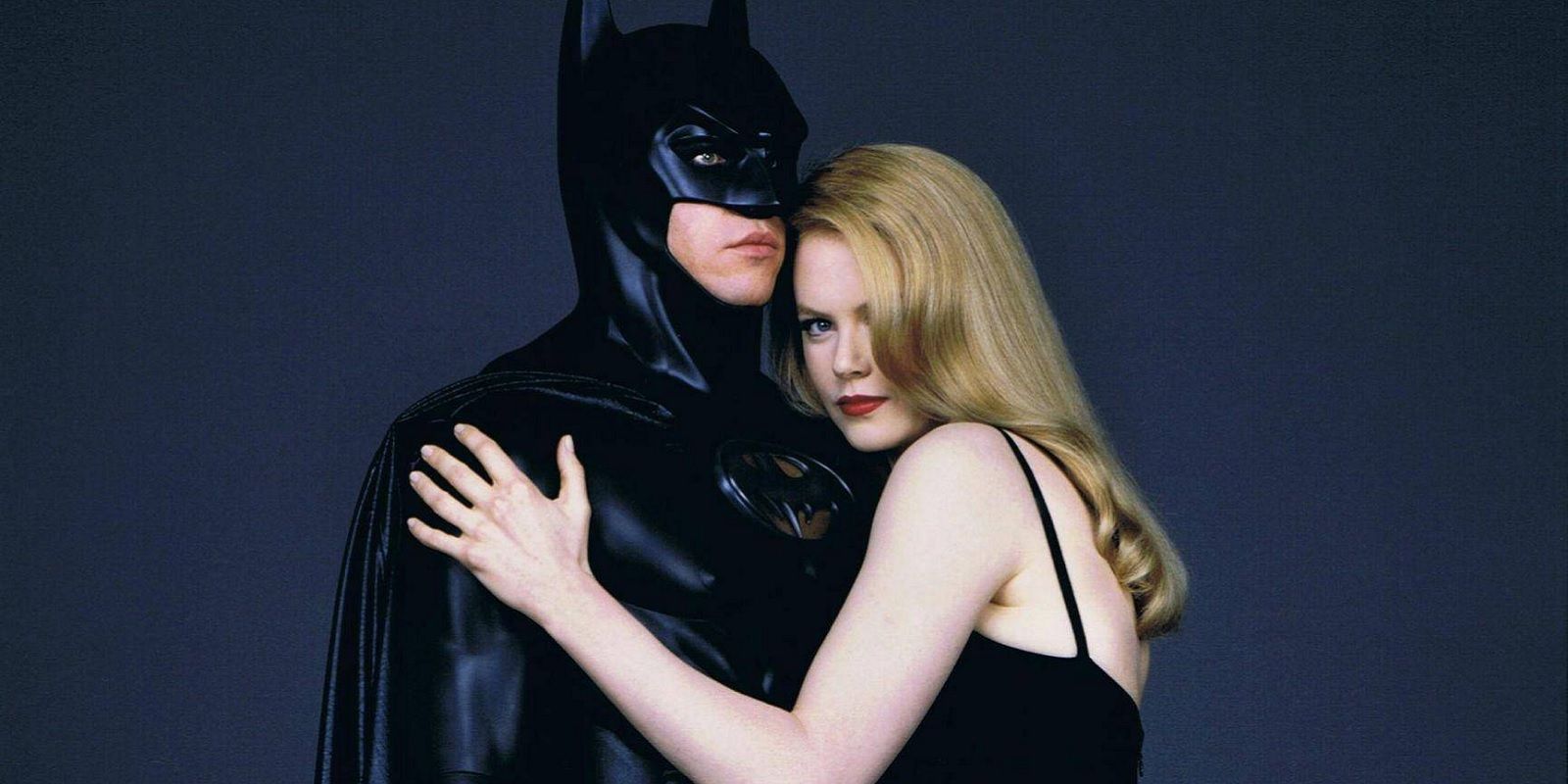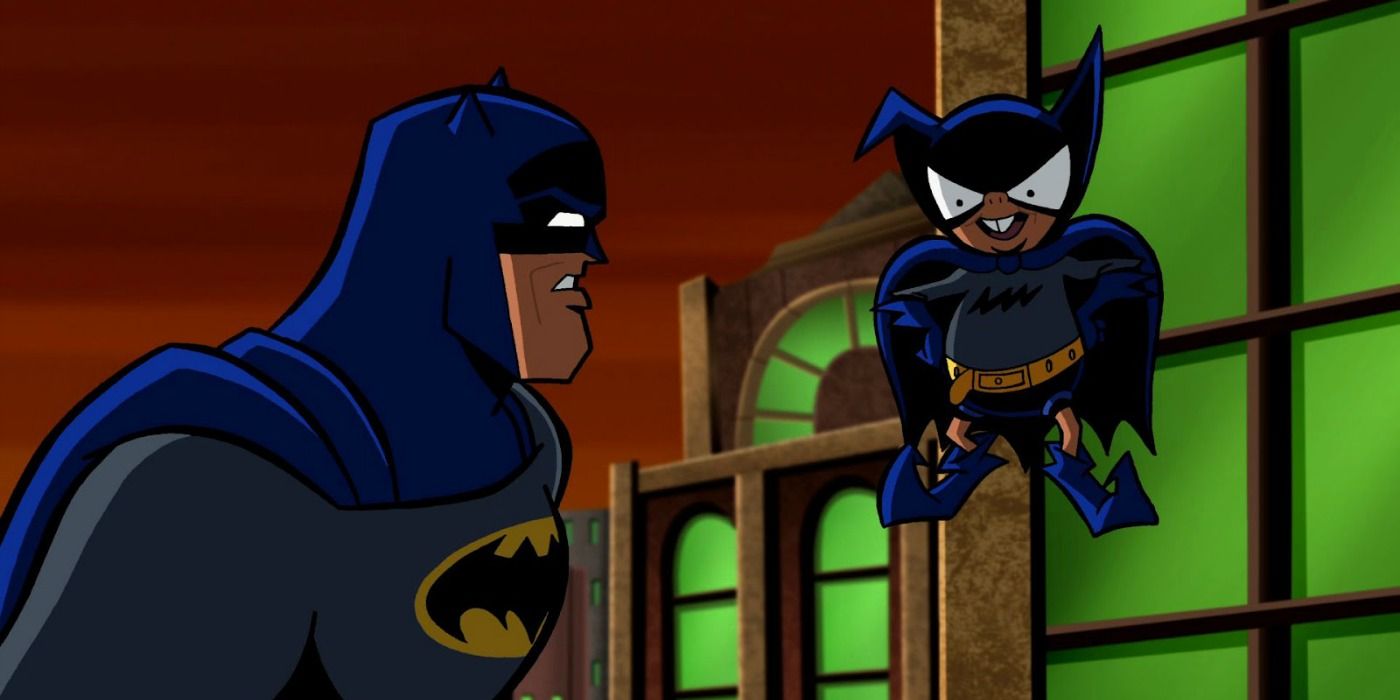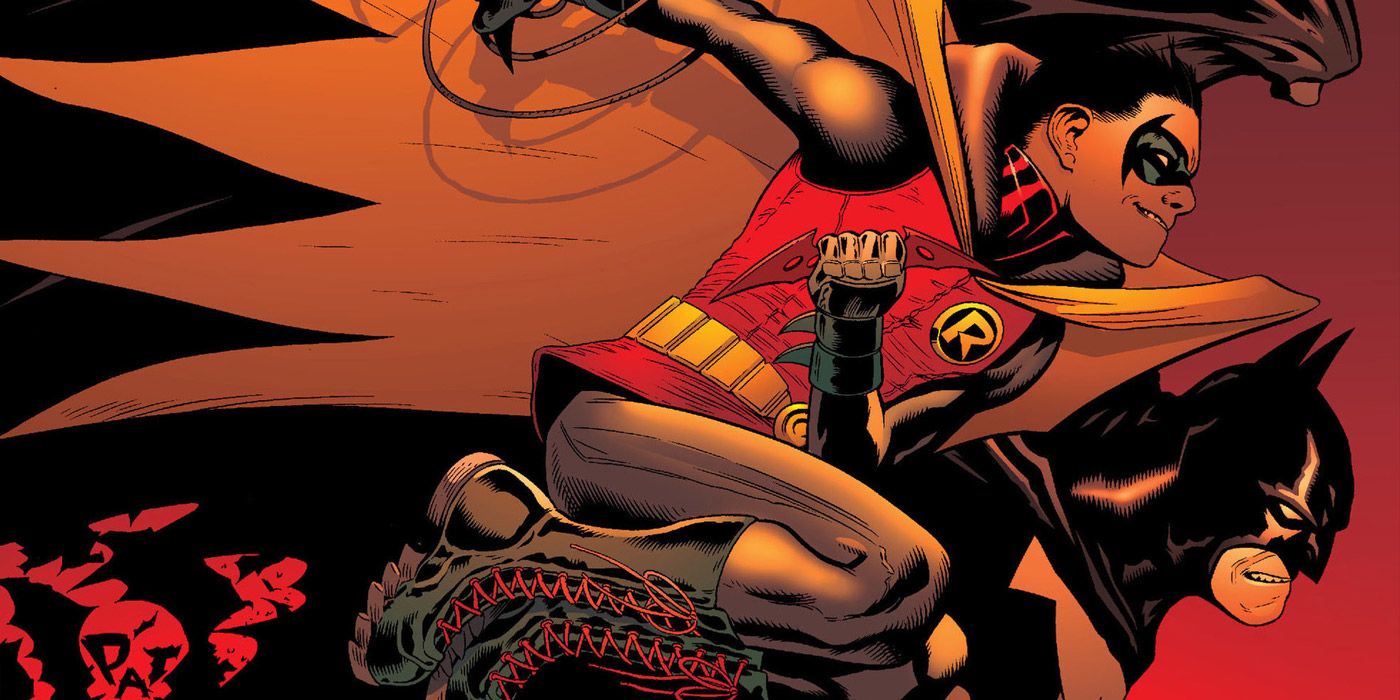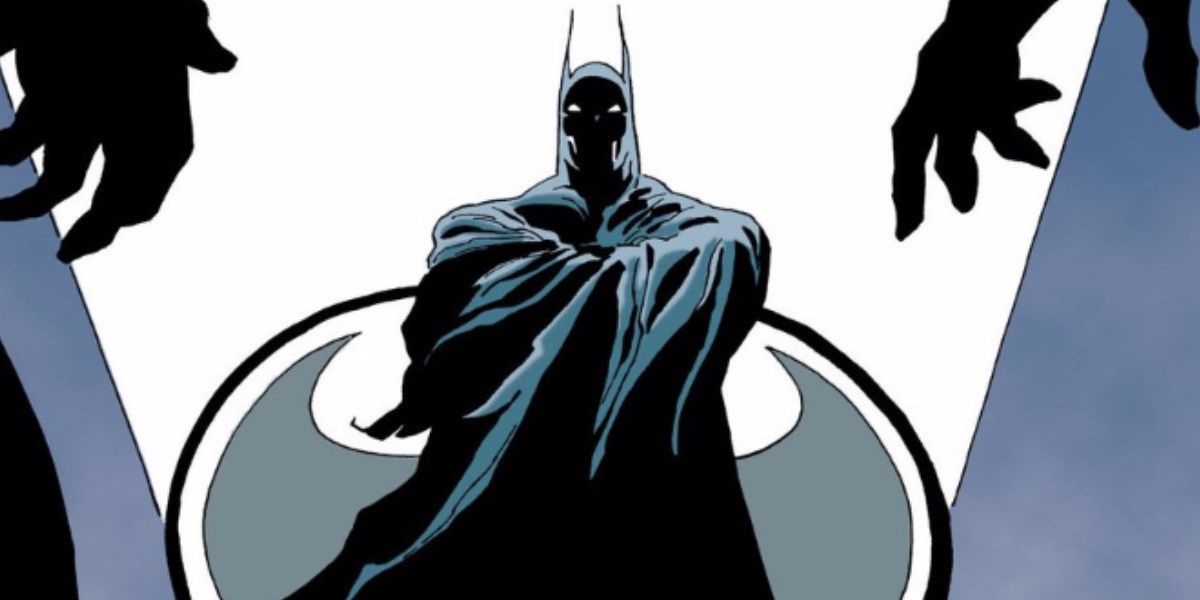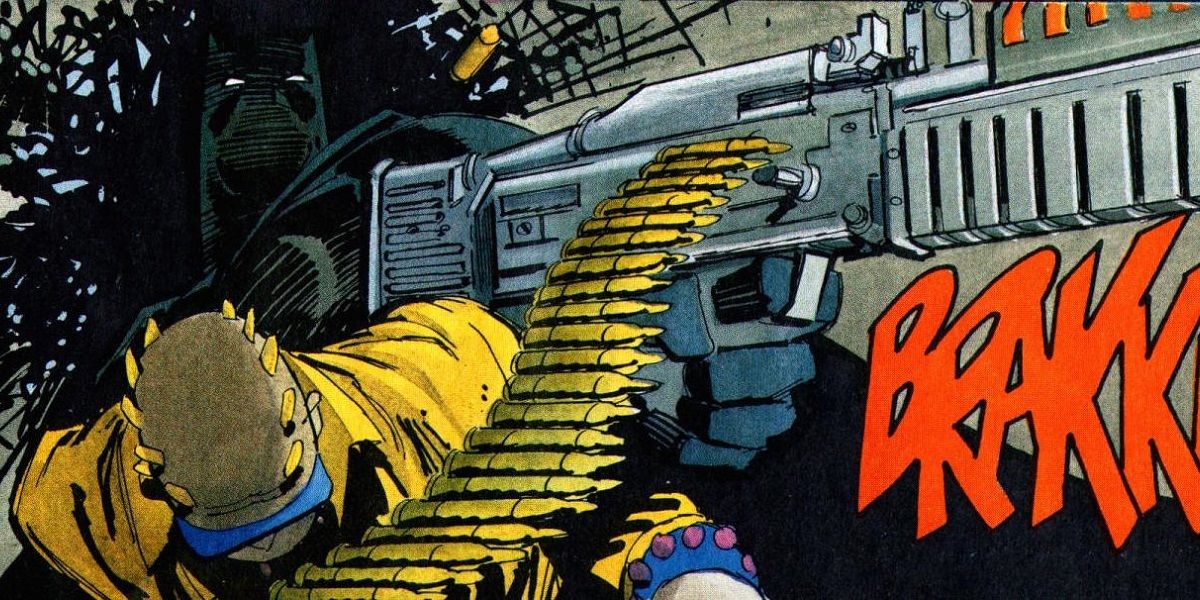During Batman comic books’ 77-year lifespan, a huge amount of narrative detritus has accumulated, the result of not only different writers or editors attempting to imprint their own (peculiar) ideas on the character, but also from the various time periods that the Dark Knight has suffered through: using the Bat-ray gun to fight moon monsters in the 1950s is one prime example, as is a gun-toting, blood-letting Caped Crusader (in the ‘30s and brief, sporadic times ever since). Typically, in succeeding waves of creators, the Bat-ship gets righted again, and everyone can proceed to pretend as if those deviations never happened.
But as the DC Extended Universe continues to find its footing, and as its various filmmakers look ever more to the source material for inspiration, this cleansing process will have to start anew – and will be compounded by the little fact that, at times, what works on the comic-book page falls completely apart on the big screen.
As actor/co-writer/director Ben Affleck continues to ramp up The Batman for its probable release sometime in late 2018, we have decided to help him in his sorting-out process: here are the 15 Things From Batman Comics We Don’t Want In The Next Solo Movie.
14. Time travel
Batman has had a long, though rare, relationship with time travel, starting all the way back in 1942, when he is hypnotized by Professor Carter Nichols to send his psyche back to ancient Rome. But perhaps the most famous time-skipping story is also the most recent one, when the vigilante goes up against the New God Darkseid and is struck by his Omega Beams, which have the ability to transport individuals to alternate dimensions (as well as kill, resurrect, or, even, erase them from history).
The entire DC Universe (along with readers) first believed the Dark Knight to be dead, but in the 2010 miniseries The Return of Bruce Wayne, it’s revealed that he was merely hurtled back through time. Each of the series’s six issues follows him as he jumps from one time period to another – such as the Paleolithic Era to colonial Gotham to the far future, when the entire cosmos is about to be destroyed – eventually working his way back to the 21st century. It’s just as bizarre as it sounds – Stone Age Batman has to be seen to be believed – and it has absolutely no business being in a film franchise that has already tried hard to cement itself as a more believable take on the character.
13. Supernatural elements
Yes, it’s true that the DC Extended Universe has already dipped its toe into the magical realm with Batman v Superman: Dawn of Justice (Wonder Woman [Gal Gadot] is an Amazonian goddess, after all) and Suicide Squad (the Enchantress [Cara Delevingne] is, essentially, a demonic entity that possesses a hapless archaeologist), and this already looks to be fully expanded with next year’s Wonder Woman.
But here’s the catch: even though Bats has to share the screen (and shared universe) with these characters, his standalone stories often suffer, to one degree or another, when they’re predicated on the same supernatural concept; the appeal of and the drama apparent in a mere mortal man pushing himself to almost God-like levels in order to dominate other men is undermined by having to fight against, say, a ghost-like Satanic specter (1990’s “Gothic” storyline) or the vampyric Mad Monk (2006’s Batman and the Mad Monk). If Warner Bros. tries to keep the character’s interstellar adventures limited to the Justice League films and the fantastical to, well, everything else, The Batman should be left in good shape.
12. Sci-fi elements
Leading up to DC’s recent Rebirth event, the growing trend behind the editorial stewardship of the Bat-books was to insert more and more concepts straight out of a science fiction story. As such, readers got to witness an endless series of clones of Damien Wayne, Bruce’s long-unknown son and the most recent Robin; magnetic boots that allow the Dark Knight to walk on the bottom of criminal-carrying dirigibles; and antagonistic androids that feature the powers of Superman and the tactical superiority of Batman.
Now, of course, technological gadgets – best represented by the utility belt, that ultimate of Bat symbols – have been an integral part of the Bat mythos ever since day one, and they’re the ultimate justification for how a normal man can take on hordes of baddies or zoom around Gotham undetected. But it’s imperative to keep the level of tech feasible instead of (overwhelmingly) speculative – it’s the difference between the old James Bond films and the new, Daniel Craig ones. The Dark Knight trilogy’s gliding cape is ingenuous, as is Batman v Superman’s remote-controlled Batwing. Let’s keep The Batman there and not allow it to approach Star Trek levels of tech.
11. The origin story
When Marvel recently accepted Spider-Man into its cinematic fold, it left his “with great power comes great responsibility” origin story out of Captain America: Civil War. It was the right move – given that this is the third big-screen iteration of that character in just 14 years, audiences are more than familiar with the backstory – they are, in fact, primed for what new adventures are to come.
By the time The Batman releases in 2018, it’ll be the ninth modern film for the character. When taken in conjunction with the fact that it’ll represent at least his fourth appearance in the DCEU, and that his origin has already played something of a major role in BvS, there is absolutely no need to beat viewers over the head with the iconic sequence yet again. As a matter of fact, no future Batman, whether part of this shared cinematic universe or its own rebooted solo property, will ever need to feature the tale ever again (a lesson the comics themselves are still trying to learn, as nearly every standalone one-shot or miniseries still suffers from this practice, as well).
10. Batman, Inc.
Once writer Grant Morrison brought Bruce Wayne back from the dawn of mankind to the present day following his “death,” he sought to introduce yet another Bat-monkey wrench into the mix: multiple Batmen.
It turns out that Dick Grayson, the first Robin, ended up brandishing the cape and cowl in Bruce’s absence, and the additional Bat-presence on the streets makes the original Dark Knight come to the realization that it’s possible to have the Batman present in every country around the world, to fight crime wherever it preys on the weak. This leads to the creation (or resurrection) of characters such as Batwing, the Bat from Africa; Hong Kong’s Black Bat; Chief Man-of-Bats, the Native American representative; and El Gaucho, from Argentina.
The concept is equal parts crazy and intriguing, but its real detriment to being included in the next Bat-film is its sheer complexity; it would take too much screen time to first introduce and then spin off all the various international Bat agents, and that ignores the little fact that, in Batman’s 20-year backstory in the DCEU, he’s already accrued much, if not all, of the so-called Batman Family, partner characters who help the vigilante prowl and protect the streets of Gotham (such as Robin and Batgirl). Jumping straight to Batman Incorporated would short shrift them, as well as getting the new solo film franchise off on the wrong foot.
Speaking of which…
9. Multiple Batmen
In addition to temporarily toying with having a global Batman franchise, the comics have also, over the past eight decades or so, more consistently experimented with a different way of having multiple men take up the cape and cowl: by having Bruce Wayne temporarily give up his life’s work, for one reason or another, and pass his costumed identity on to another for a short while.
The incident that was just mentioned – the former Robin (and current Nightwing) dressing as Batman during the original’s “death” – is illustrative of the general approach to the premise, but there are versions that are more recent (Commissioner James Gordon taking up a mechanical Bat-suit when Bruce Wayne is feared dead [yes, yet again]) or more famous (the anti-hero known as Azrael filling in when Bruce has his back broken by Bane in the “Knightfall” storyline).
While the concept is a valid one – when not overused, that is – it’s just too early for any of the DCEU superheroes to be getting replaced, even if just for a single film (although the filmmakers did already kill Superman…). It would be best to save this particular storyline for, say, a third entry in the trilogy, just as director Christopher Nolan did in his Dark Knight series, leaving audiences unsure of whether Ben Affleck would ever come back – or if there would be any more solo outings.
8. Exaggerated villains
There is a whole host of antagonists that have yet to make an appearance in a Bat-film, and a lot of these are perfectly suitable for The Batman and the tone that Affleck is attempting to create for the franchise. However, there are a number that aren’t appropriate, given the new film’s placement immediately after the alien- and god-fueled hijinks in Batman v Superman, Suicide Squad, Wonder Woman, and Justice League, Part I– villains that are more cartoony or more exaggerated in nature, such as Professor Pyg (a man who mutilates victims into Dollotrons, genderless beings that wear doll dresses) or Calendar Man (who plots all of his crimes – and, at times, his costumes – around the various holidays throughout the year).
There’s also been a tendency in the last few years of the comic books to reimagine Batman’s rogues gallery as over-the-top baddies, as well. This is perhaps best personified by the Ventriloquist, who went from being a meek old man whose multiple-personality disorder was manifested in his puppet to a super-steroid-fueled menace who has been known to use actual people as his ventriloquist’s dummy. We couldn’t stress enough how much of a terrible idea this would be to employ.
7. CONSTANT breakouts from Arkham
One of the hallmarks of the various Batman titles over the decades is Batman’s apprehension of one member or another of his rogues gallery, her return to Arkham Asylum, and then her subsequent breakout, causing the cycle to start all over again.
The film outings, meanwhile, haven’t had to contend with this particular formula, since it created one all its own: introduce a villain, have him battle against the Caped Crusader, and then kill him. And even in the rare instances where he survives the movie, he only gets a cameo appearance in the sequels – if he gets any mention at all, that is (the Dark Knight trilogy’s Scarecrow [Cillian Murphy] comes to mind here).
Given that the DC Extended Universe is a shared meta-franchise, and given that it has started well after all of Batman’s greatest foes have already been assembled (and, presumably, locked up), it’ll be the first time that movie audiences will have to contend with the source material’s conceptualization of prison as nothing more than a revolving door. Something will have to be done to compensate for what is truly one of the least believable aspects of the mythology – especially considering that both Harley Quinn (Margot Robbie) and the Joker (Jared Leto) have both been busted out and arrested at least once already.
6. A love interest
This is one of the rare instances where the films deal with a particular trope (or crutch) more than the comics. As we have just recently noted, this has more to do with the Hollywood-proscribed rules for filmmaking – every picture, especially comic book adaptations, has to include a lovely lady for our dashing hero to pursue, no matter how shoehorned into the story it may be. And while the Marvel movies are just as guilty of this, the previous Batman entries have been especially egregious in this regard – we’re looking at you, Batman Forever’s Dr. Chase Meridian (Nicole Kidman) and Batman Begins’s Rachael Dawes (Katie Holmes).
Still, there have been more than a few love interests that either Bruce or Bats has chased after throughout the decades, and whether they be Silvia St. Cloud or Vicky Vale or Jezebel Jet, it’s better to just leave them completely out of the narrative picture – for now. Maybe if future installments introduce either Catwoman or Talia al Ghul, there can be the opportunity for a real, fully-fleshed-out relationship that lasts across multiple films and has real consequences for Bruce’s character development, but until then…
5. Bat-mite
There are few creations in the entire 77-year run of Batman that are as bizarre as the infamous Bat-Mite (well, there’s one stranger, but we’ll save that one for last).
Originally introduced in the more care-free, anything-goes days of the ‘50s (when Batman and Robin were known to hop in their Bat-rocket for some cosmic adventures), Bat-Mite is a magical being that emanates from the thoroughly-more-advanced fifth dimension (whatever that means). His powers are nearly infinite, and he typically employs them in order to observe or otherwise engage with his favorite idol in all of the space-time continuum, Batman. He’s routinely portrayed as more mischievous than malicious, more a nuisance than a threat, but, either way, it’s obvious that he’s a character better reserved for specific types of Batman stories – if any at all (although it is humorous to picture Bat-Mite popping up in the middle of the titular fight in Batman v Superman, if only to lighten the mood a little).
4. Damien Wayne
The product of a one-night stand between Bruce Wayne and Talia al Ghul (in a story which, for its first 30 years of existence, was considered non-canon), Damien Wayne is brought up by the League of Assassins (renamed the League of Shadows in the Dark Knight films) to be one of its master warriors. He eventually gets dumped in the Batcave for Batman to raise him, marking the first time that Bruce became aware of his secret son.
Eventually, Damien proves his mettle enough to warrant becoming the fifth Robin, fighting crime in the streets of Gotham alongside his father. When Talia eventually returns, it’s with the revelation that Damien is actually a clone, and that, furthermore, there are dozens more out there, including adult ones that are even deadlier in combat than little Wayne. It’s one of these genetic counterparts who kills Damien, though he is eventually resurrected by his father thanks to some cosmic relics and that pesky Darkseid, and the rest is history.
Trying to get all of that into one film is beyond crazy, and even just including a long-lost son suddenly returning home so fundamentally changes the dynamics of who Batman is and how he operates, we hope to never see it realized on the big screen.
3. Jeph Loeb
Jeph Loeb has been superb in his current role as head of Marvel TV, where he’s presided over everything from Agents of SHIELD to the various Defenders series on Netflix. And, even before that, he had managed to assemble some pretty impressive credits on his comics writing resume, earning him further nerd street cred.
But the fact still remains that Loeb is a rather formulaic writer, one who favors hugely elaborate stories around some type of framing device that borders on being gimmicky – the holidays in Batman: The Long Halloween or the seasons in Superman for All Seasons. Though containing some engaging moments – which explains why Chris Nolan lifted so many of them for his trilogy while inserting them into his own overriding narrative – these stories end up being hugely convoluted and patently ridiculous.
So as tempting as it may be for Ben Affleck and his brain trust behind The Batman to borrow from “Hush,” wherein a cheesy new villain who happens to know Bats’s true identity rallies nearly all of the rogues gallery together to take a swipe at the Caped Crusader one at a time, we can only hope that they think better of the idea and stay far, far away.
2. Frank Miller
If there’s a writer in the Bat-canon who’s even more questionable – not to mention controversial – than Loeb, it’s the legendary Frank Miller, who started off his career providing the definitive versions of both Daredevil and Batman before overstaying his welcome with DC’s most famous character and devolving his stories into mere caricatures of his former glory.
While 1986’s The Dark Knight Returns and ‘87’s “Year One” are, arguably, the two greatest Batman stories ever told, The Dark Knight Strikes Again and All-Star Batman and Robin, the Boy Wonder are paper-thin, shuffling messes that contain such scenes as Bruce Wayne locking young Dick Grayson up in the Batcave, forcing him to trap and eat rats in order to survive (preparation, we’re told, for the war to come). This would make staying away from Miller’s Dark Knight universe imperative by itself, but it’s rendered all the more critical by the DCEU version of Batman already having been based off of the writer’s characterization.
(For a full run-down on Frank Miller’s entire Bat-career, be sure to check out our complete guide.)
1. Zur-En-Arrh Batman
And you thought Bat-Mite was a bit… insane.
The so-called Batman of Zur-En-Arrh, much like Bat-Mite, was a creation of the way-out decade that was the ‘50s; he is an alien from a distant planet who recruits Bruce Wayne to assist his people in fighting off a race of giant robots.
Fifty years later, writer Grant Morrison repurposed the character as something of an alternate personality for Batman, a type of back-up construct in case the psychological stress of being the Dark Knight became too much – or Bruce were ever infected by some type of drug or chemical compound – and Batman had a mental breakdown (or, in a universe populated by psychics, he is telepathically wiped off his memories and/or personality). This archived back-up kicks in, making Bruce continue his never-ending war on crime on auto-pilot; he fashions a new costume that is just as brightly-colored as the ’58 version of Zur-En-Arrh and begins a more lethal, more dangerous approach to crime-fighting (with Bat-Mite accompanying him along the way, of course).
Every aspect or incarnation of this premise is so far out there, it’s impossible to see how any part of it in any degree has a home in the DCEU. It’s best if Affleck and crew do what the rest of the comic book creators have done thus far and just completely ignore the “character’s” existence.
Bonus: What TO include from the comics
After spending the past 14 entries discussing what wouldn’t quite work on film (or, even, what doesn’t even work in the native comics medium), it’s time to cherry pick just one of the even more plentiful concepts that would function beautifully in The Batman, specifically focusing on ideas that have been systematically overlooked in the previous two cinematic incarnations of the character.
The previous seven movies have left Bruce either overly reliant on the brain powers of others (see Lucius Fox [Morgan Freeman] in the Dark Knight trilogy) or they’ve simply bypassed his persona as the World’s Greatest Detective entirely (every chapter helmed by Tim Burton and Joel Schumacher). And while Dawn of Justice worked to rectify this detective part, that’s just the tip of the iceberg of Batman’s big, brilliant mind.
His is a genius that is nearly incomparable, from its vast stores of accumulated knowledge to its ability to deduce and induce (think of him as the comic book version of the BBC’s Sherlock), and it’s what earns him his place on a team filled with all these other god-like beings; an oaf with just an intimidating presence, after all, would have zero role to play in their battles against alien invaders or other apocalyptic threats. It’s well past time that we witness in action an intellect that can see three steps ahead of everyone else and has already formulated contingency plans for every possible scenario.
Now that would be a Batman for the cinematic ages.
---
Did we miss anything? Is there an extra bonus that we should’ve included? Be sure to sound off in the comments.

